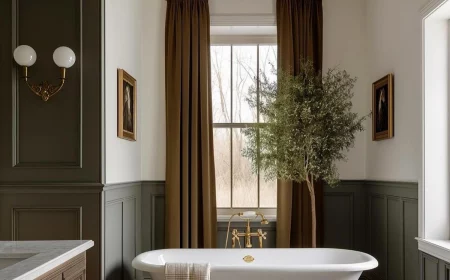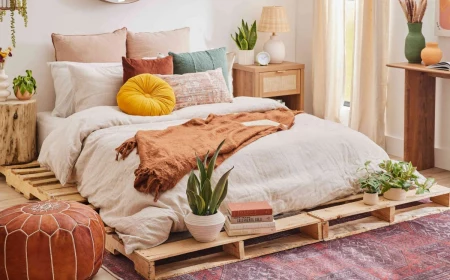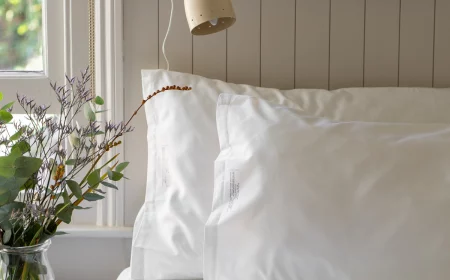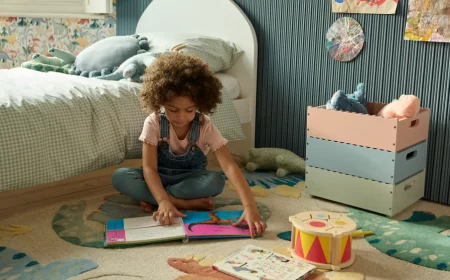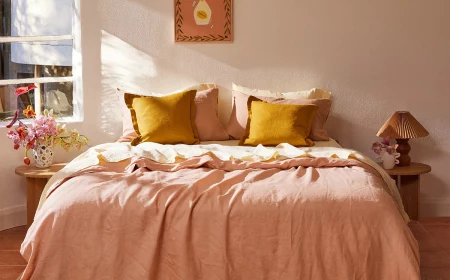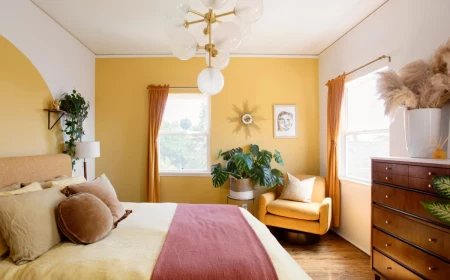Your Bedroom Isn’t a Showroom: A Guide to Designing for Actual Rest
I’ve seen it a million times. Someone comes in, buzzing with excitement over the latest design trend they saw online. And while I love the enthusiasm, my first question is always the same: how do you want to feel in this room? Because honestly, a bedroom is more than just a collection of cool stuff. It’s the one place in your home that’s supposed to be all about rest and recharging. Its design needs to serve that mission above anything else.
In this article
- The Invisible Stuff: Setting the Stage for Sleep
- Getting Tactical: Materials and Textures That Feel Good
- Making It Work: The Practical Side of Things
- The Renter’s Rescue Kit
- Health, Safety, and When to Call a Pro
- Your Budget-Friendly Starter Kit
- Try This Tonight: Your 1-Hour Bedroom Reset
- Inspirational Gallery with Photos
So, this isn’t about chasing fleeting styles. It’s about getting back to basics and understanding the things that genuinely create a restful space. These are the principles that stand the test of time, the stuff that pros know makes a real difference. We’ll get into the nitty-gritty of how your room affects your sleep, the feel of good materials, and the practical steps to build a sanctuary that actually works for you.
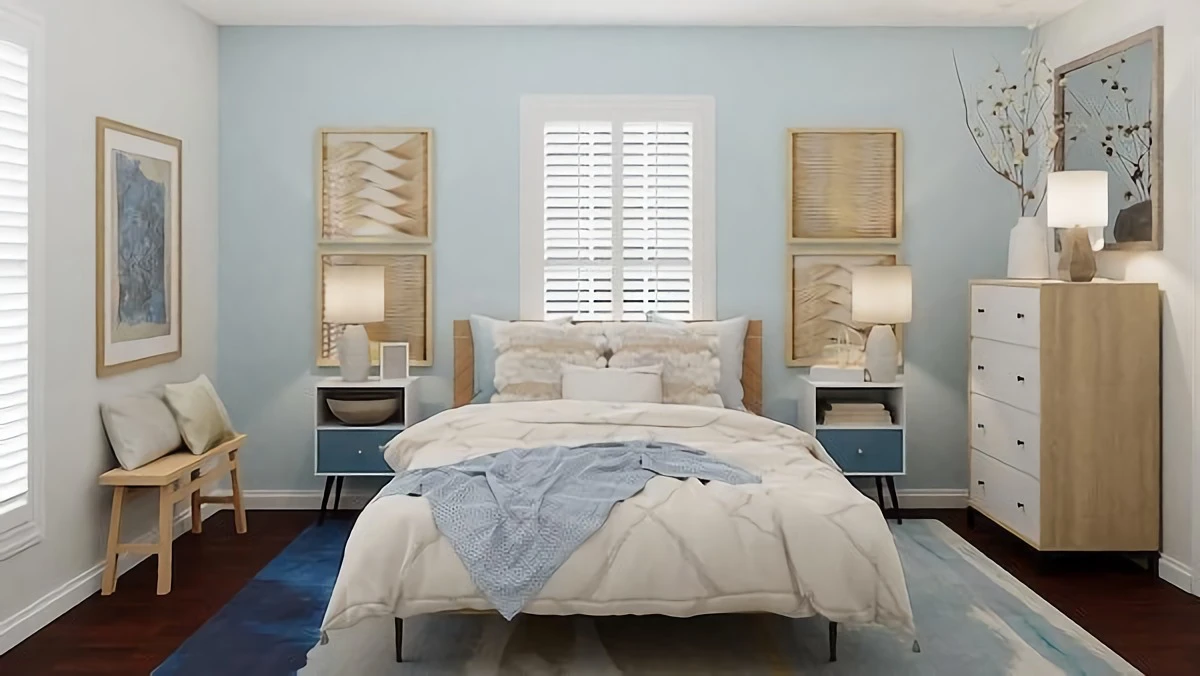
The Invisible Stuff: Setting the Stage for Sleep
Before you even think about paint swatches or pretty pillows, you have to tackle the invisible elements that dictate how a room feels. Great design works with your biology, not against it. A truly successful bedroom respects your natural rhythms and sensory needs—it’s that simple.
Light is Everything (Seriously)
The single most important factor in your bedroom is light. It’s the boss of your circadian rhythm, that internal clock telling your body when it’s time to be awake and when to shut down. I’ve seen gorgeous bedrooms where people slept terribly, and nine times out of ten, the lighting was the culprit.
Daylight Done Right: You want to greet the day with soft, gentle light but be able to plunge the room into total darkness at night. The classic pro solution is a double-up: sheer inner curtains for privacy and soft light, paired with thick, blackout-lined outer drapes. Quick tip: Install your curtain rod at least 6-12 inches wider than the window frame on each side. This lets you pull the curtains completely off the glass during the day, so you get every bit of that natural light.
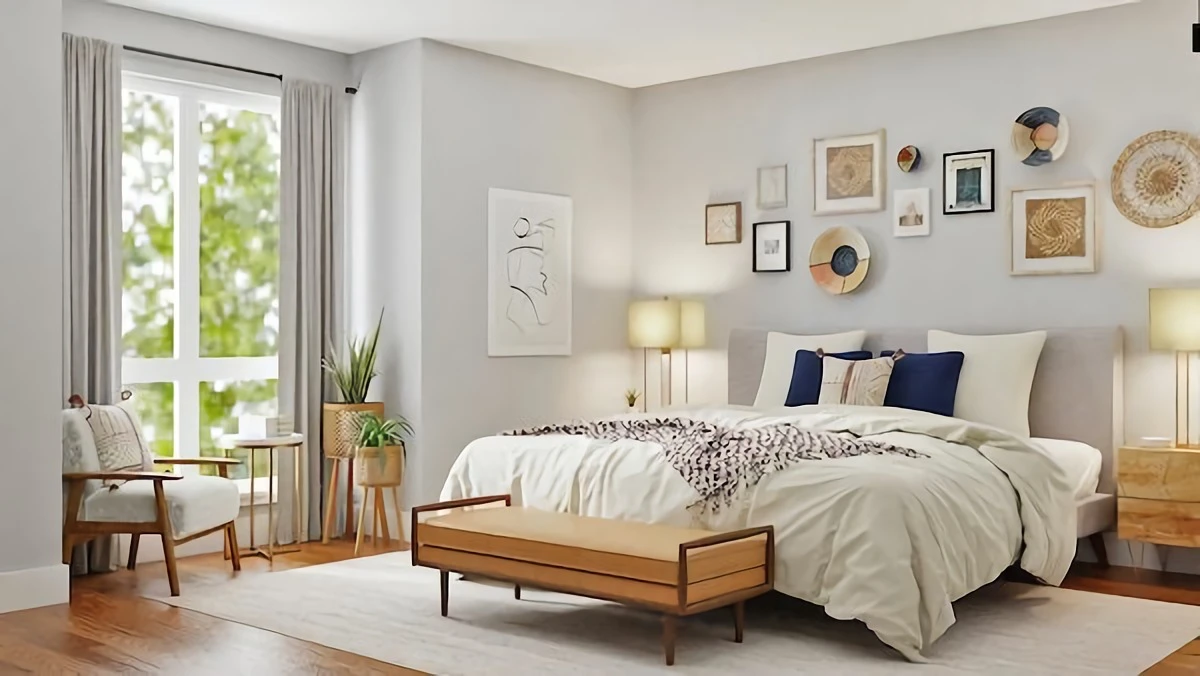
The Light You Control: This is where so many people trip up. That harsh, blue-toned light from standard LED bulbs, your phone, and your TV is basically telling your brain, “Hey! It’s daytime!” For a bedroom, you need to go warm. Look for bulbs with a color temperature between 2700K and 3000K. On the box, this is usually labeled ‘Soft White’ or ‘Warm White.’ It mimics the calming, yellowish glow of a candle and helps your brain unwind.
A layered lighting plan is your best friend here. You need three types:
- General (Ambient): A main ceiling light or some recessed lights, but they absolutely must be on a dimmer switch. This is non-negotiable. It lets you go from bright “I-can’t-find-my-sock” mode to a calm, evening glow.
- Reading (Task): Bedside lamps are a must. Position them so the light hits your book, not your face. I’m a big fan of lamps with an adjustable arm or a really focused shade.
- Mood (Accent): This is the secret sauce. A small, low-wattage lamp on a dresser or a light over a piece of art creates a soft, welcoming vibe that makes the room feel finished.
Oh yeah, and if you can’t install a dimmer switch because you’re renting or just don’t want the hassle? You can get a two-pack of smart bulbs for about $30 at Home Depot or online. You can dim them and even change their warmth right from your phone. It’s an amazing hack.
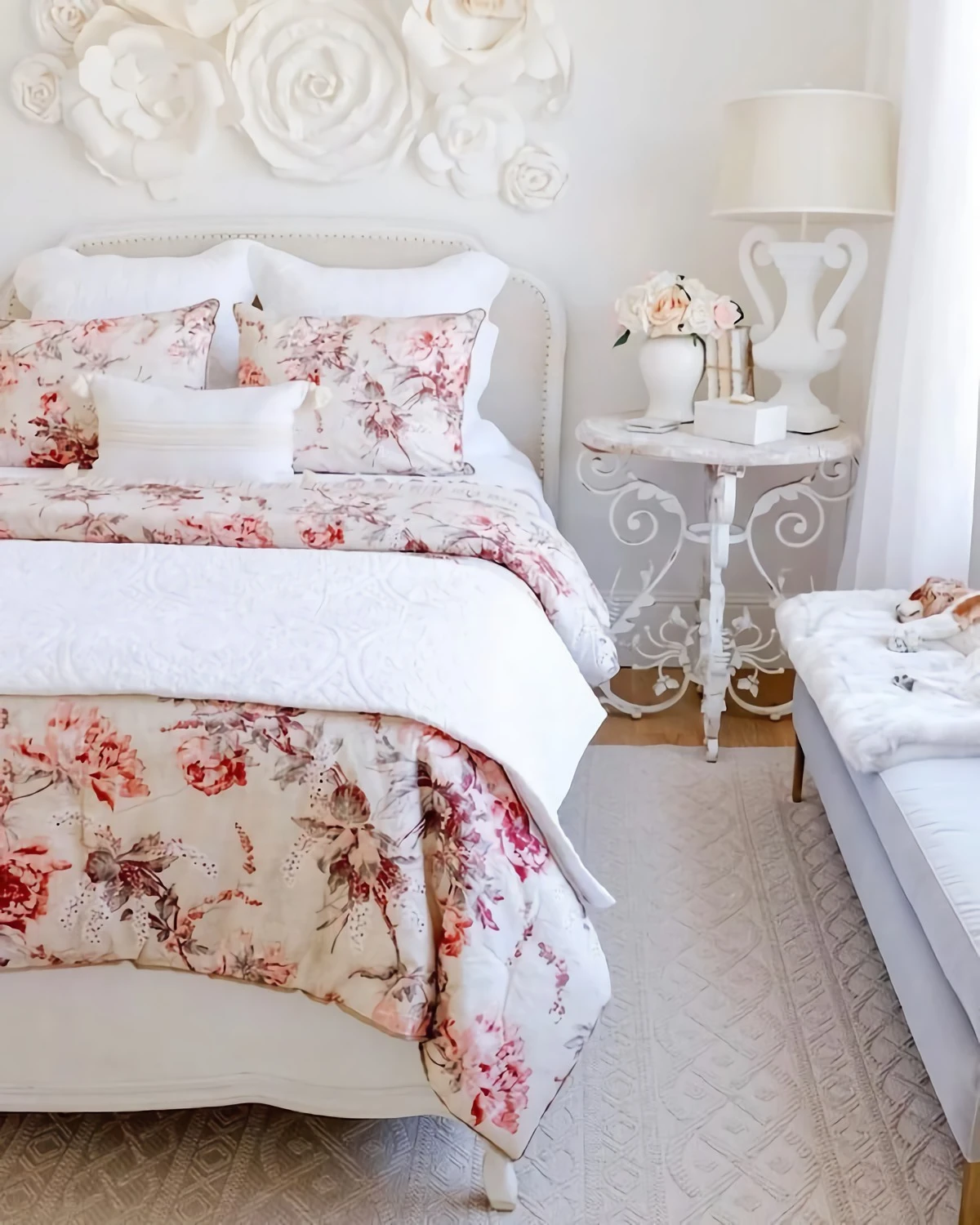
The Vibe of Color and Space
Color isn’t just for looks; it’s a psychological powerhouse. And while the idea of “calming colors” is totally real, it’s less about the specific color and more about how intense it is. Bright, super-saturated colors are like a shot of espresso for your eyes—great for a home gym, terrible for a bedroom.
What you want are muted, less saturated colors. Think about the soft, hazy tones of a foggy morning. Sage greens, dusty blues, and warm greys are popular for a reason: they don’t scream for your attention, which lets your mind quiet down. If you’re set on a bolder color like a deep navy or forest green, try it on just one wall, usually the one behind your bed. It creates this dramatic, cocoon-like feeling without making the whole room feel heavy.
There’s a technique some people call “color drenching,” where the walls, the trim, and sometimes even the ceiling are all painted the same muted color. It can make a small room feel surprisingly bigger and more intimate by blurring the edges. The key is to use a matte or flat finish. Anything glossy will reflect light and create visual noise, while a matte finish absorbs light for a soft, velvety look.
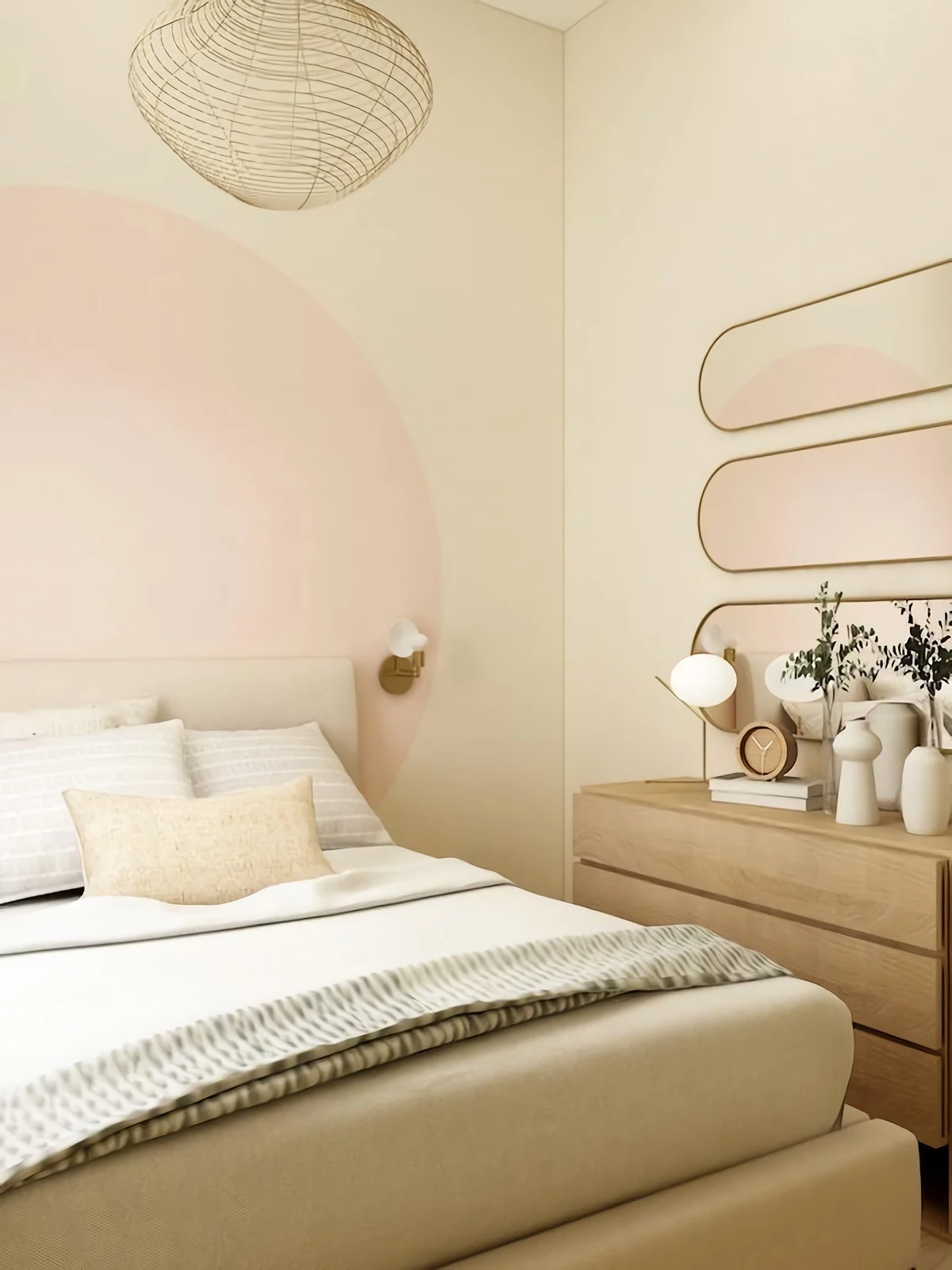
Getting Tactical: Materials and Textures That Feel Good
A restful room should feel as good as it looks. Texture and the quality of your materials create a whole sensory experience that whispers “comfort.” This is where you can really feel the difference between a room that was just thrown together and one that was thoughtfully considered.
Layering for Coziness and Quiet
Layering different textures is a go-to trick for adding visual depth and physical comfort. But just as important, all those soft surfaces—your rug, your curtains, your bedding—absorb sound, which is crucial for a quiet space.
When it comes to your bed, think like you’re making a perfect sandwich. Here’s how to layer it up:
- The Sheets: This is your base. Percale cotton is that crisp, cool-to-the-touch feel you get in nice hotels, perfect for hot sleepers (expect to pay around $60-$120 for a good queen set). Sateen is silkier and smoother with a little sheen. My personal favorite, though, is linen. It’s super durable, breathes beautifully, and just gets softer with every wash. That natural, slightly rumpled look is effortlessly chic. A quality linen set is an investment, usually running $150-$300, but it lasts forever.
- The Mid-Layer: Add a quilt or a coverlet. This gives you a bit of weight and another hit of texture, like a stitched matelassé or a simple cotton design.
- The Top Layer: A fluffy duvet or comforter, often folded at the foot of the bed. It adds a look of plushness and is there when you need extra warmth.
- The Fun Stuff: Finish with a chunky knit wool throw or a faux-fur blanket for pure indulgence. A couple of decorative pillows in different materials like velvet or silk seal the deal. Try to have at least three different textures going on.

Choosing Materials with a Purpose
Beyond the bed, think about the other big surfaces.
Flooring: If you have hardwood, a large area rug is a must. It should be big enough for the bottom two-thirds of your bed to sit on it, with about 24-30 inches of rug sticking out on the sides. Nothing worse than stepping out of a warm bed onto an ice-cold floor! Wall-to-wall carpet is great for sound absorption; a dense, low-pile wool is a fantastic, long-lasting choice.
Windows: We talked about light, but the material of your curtains also helps with sound. Heavier fabrics like velvet or lined linen can do a surprisingly good job of dampening outside noise.
A quick note on shopping: Don’t just look at the price tag. Feel the materials. A cheap linen-blend will feel scratchy and thin. Good linen has a satisfying weight to it. When looking at vintage dressers, for example, pull out a drawer. Look for interlocking ‘dovetail’ joints instead of just staples and glue. That’s a classic sign of quality craftsmanship that’s built to last.
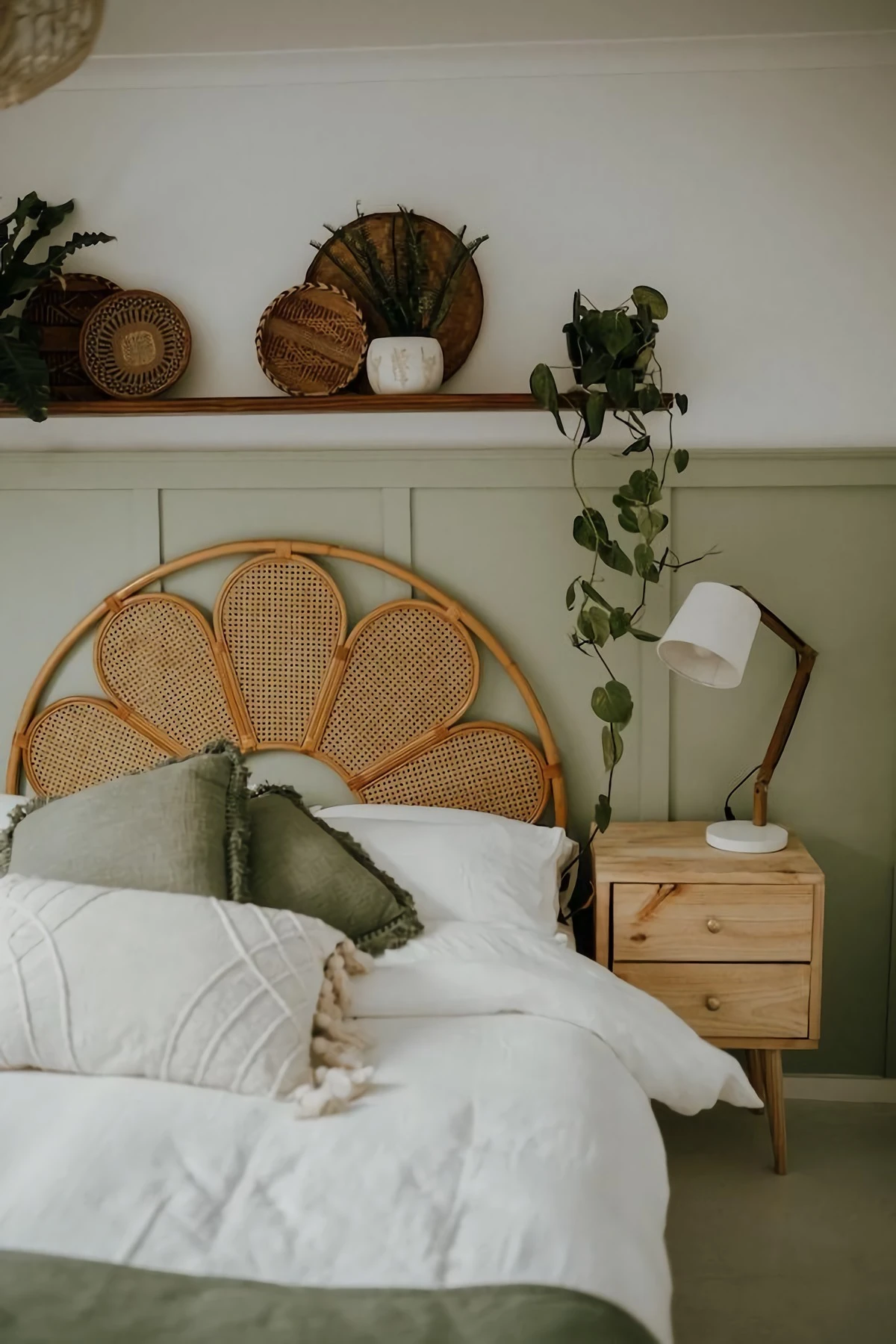
Making It Work: The Practical Side of Things
A beautiful room is totally useless if it doesn’t function in the real world. Layout, furniture, and storage are just as important as the color on the walls.
Getting the Layout and Furniture Right
The bed is your room’s anchor. Ideally, you want the head of the bed against a solid wall where you can see the door without being directly in line with it. It’s a primal thing, but it creates a subconscious feeling of safety. And please, give yourself room to move! You need at least 30-36 inches for main walkways. Before you buy a single piece of furniture, map out its dimensions on the floor with painter’s tape. This five-minute trick has saved so many people from the headache of buying a dresser that’s too deep to open.
Speaking of furniture, the days of buying a perfectly matching five-piece bedroom set are over, thank goodness. A room with individual pieces that you love has way more personality. Your bed frame and mattress are where you should really invest. A quality mattress can be a big purchase—expect to spend anywhere from $1,200 to over $3,000 for a good queen-size made from materials like natural latex—but you’ll be sleeping on it for the next decade. It’s the foundation of your health.
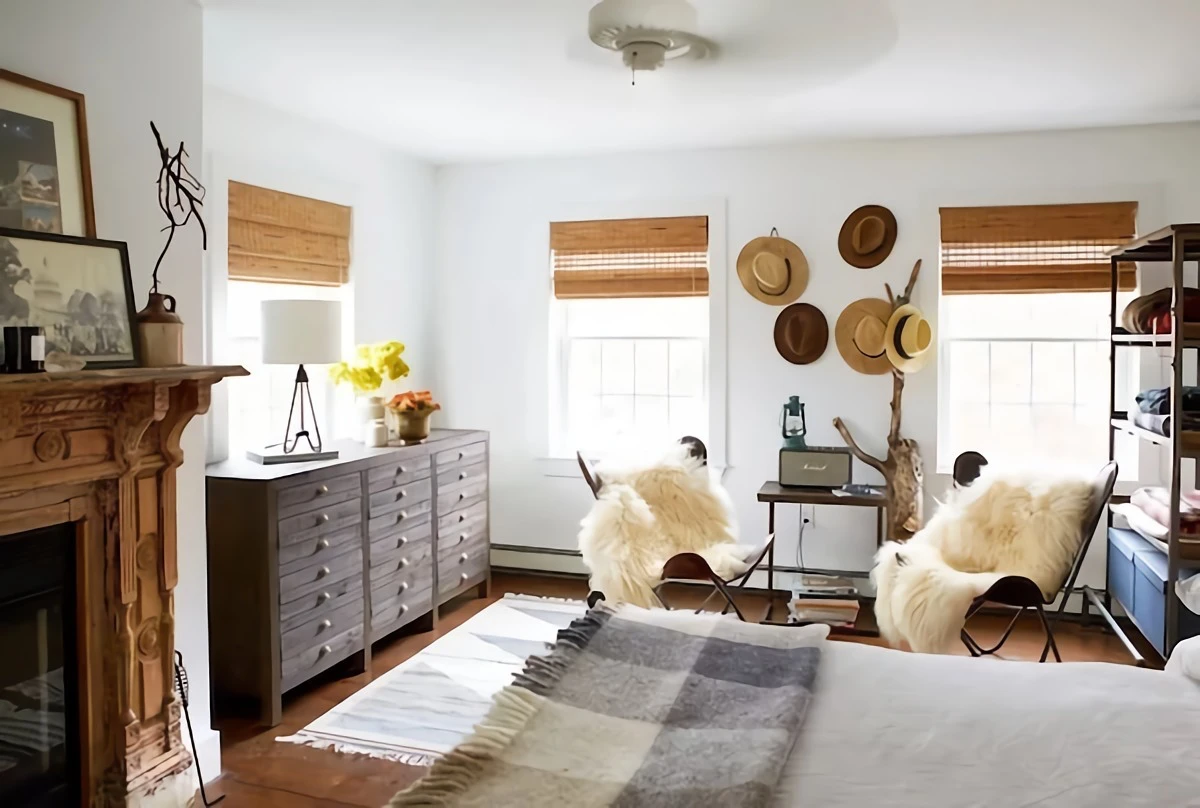
By the way, here’s a common mistake I see all the time: nightstand height! For the most comfortable and functional setup, aim for your nightstand to be about level with the top of your mattress, or maybe an inch or two lower. It just makes everything easier.
The Renter’s Rescue Kit
What if you can’t paint or install new light fixtures? Don’t worry, you are not doomed to a bad bedroom. You just have to be a little more clever.
- Window Woes: If your blinds are flimsy, get some removable static-cling blackout film online. It’s cheap, effective, and peels right off when you move out.
- Lighting on a Lease: Use those smart bulbs we talked about! Paired with a few nice floor and table lamps, you can create that layered lighting effect with zero wiring.
- No Headboard, No Problem: Lean a large piece of art, a vintage folding screen, or even a beautiful textile behind your bed for a dramatic focal point.
- Wall Wow-Factor: High-quality peel-and-stick wallpaper can look amazing on an accent wall and is designed to be removed without damaging the paint underneath.

Health, Safety, and When to Call a Pro
This is the part that isn’t glamorous, but it’s incredibly important. A designer’s job is to create a space that’s not just beautiful, but also safe and healthy.
Breathe Easier: Many paints, cheap furniture, and fabrics release nasty chemicals called VOCs. In a room where you spend a third of your life, you want to minimize those. Always opt for Low-VOC or Zero-VOC paints—most major brands have them now, and a gallon will run you about $70. For mattresses and furniture, look for certifications like Greenguard Gold, GOTS, or Oeko-Tex, which ensure low chemical emissions.
And I’m going to be blunt here: any work involving electricity requires a licensed electrician. Period. It’s not the place to save a few bucks. The same goes for hanging anything extremely heavy. You need to know what’s behind the drywall. Hiring a pro isn’t a failure; it’s a smart investment in getting the job done right and keeping your home safe.
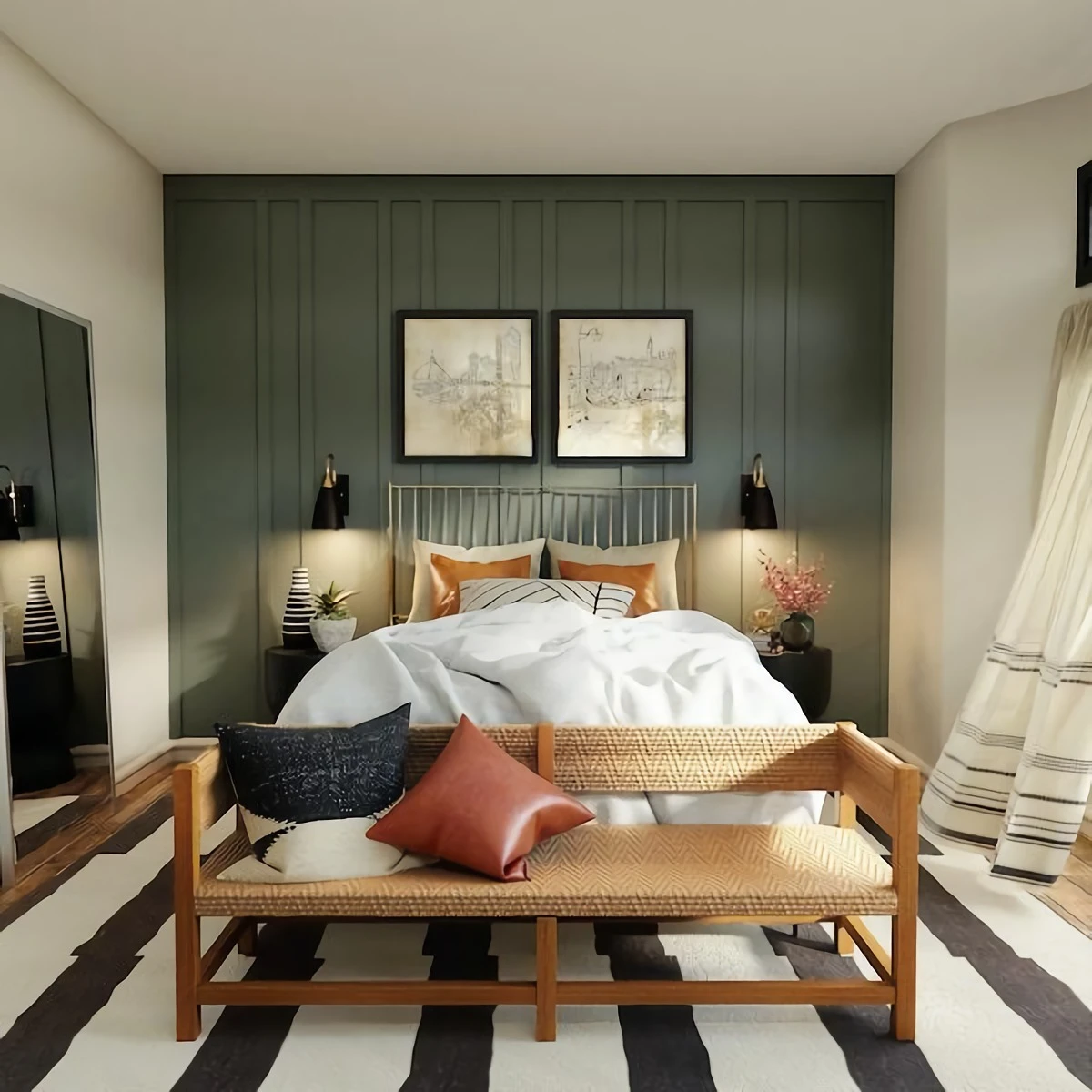
Your Budget-Friendly Starter Kit
Feeling overwhelmed? You don’t have to do it all at once. Here’s a starter kit to make a big impact on a small budget:
- Zero-VOC Paint for an accent wall (~$70/gallon)
- A nice set of linen-blend or percale sheets from a place like Target or IKEA (~$80)
- A pair of decent blackout curtains (~$50)
- Two warm-white smart bulbs (~$30)
For around $230, you can completely change the feel of your room. It’s all about making smart choices that support the real purpose of the space: your rest.
Try This Tonight: Your 1-Hour Bedroom Reset
Want to feel a difference right away? Give this a shot.
- Clear every single thing off your nightstands. Put back only your lamp, a book, and maybe one small personal item you love.
- Swap the bulbs in your bedside lamps for warm-white (2700K) bulbs.
- Make your bed, and take the extra 30 seconds to fold your comforter or duvet neatly at the foot.
That’s it. Notice how much calmer the room feels tonight. It’s a small step, but it’s the beginning of reclaiming your bedroom as a true sanctuary.
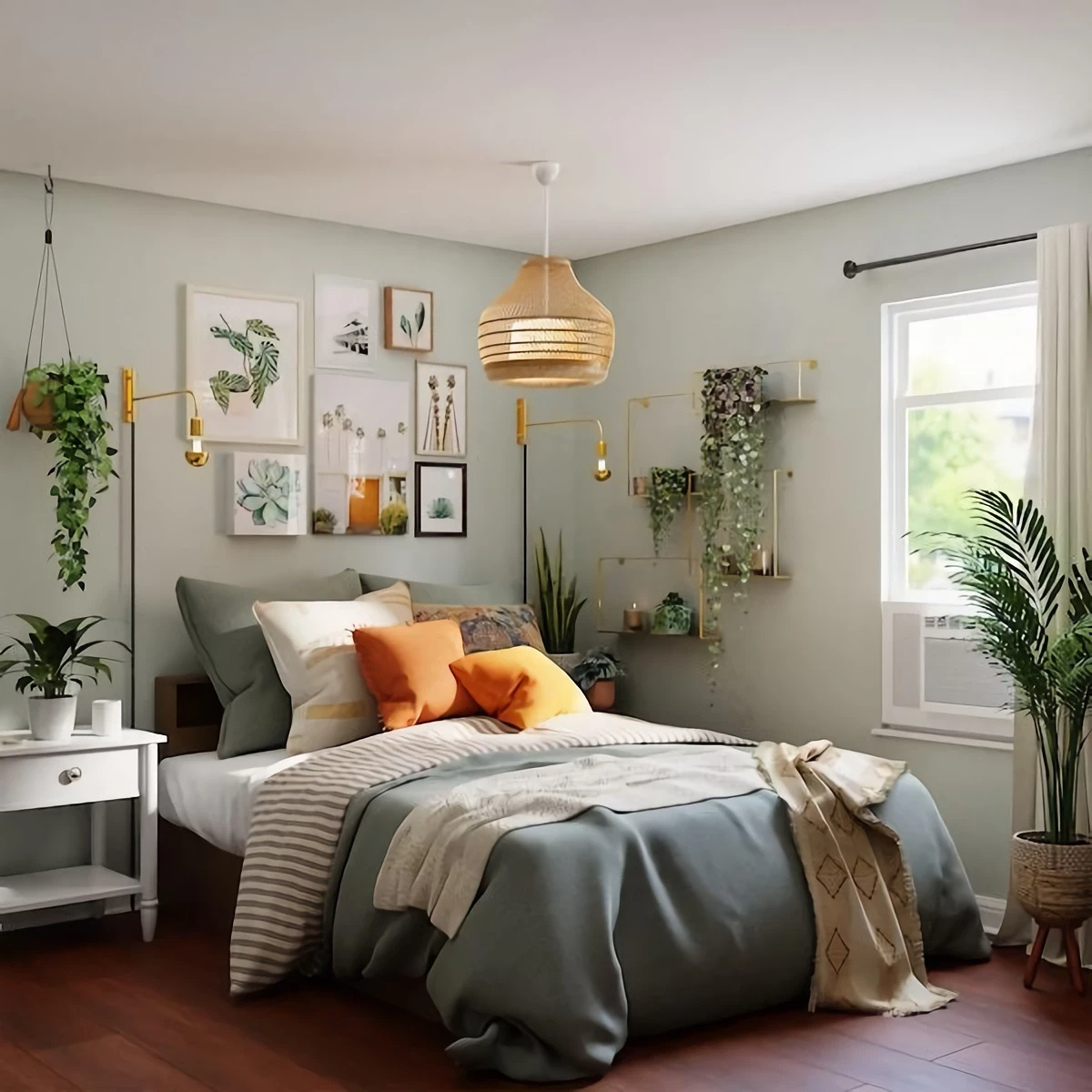
Inspirational Gallery with Photos
The sense of smell is the only one of our five senses that is directly linked to the limbic system, the part of the brain that controls memory and emotion.
This is why certain scents can instantly calm you. A simple pillow spray with lavender or a diffuser with a few drops of sandalwood essential oil can become a powerful, non-visual cue to your brain that it’s time to unwind and prepare for sleep.
When it comes to bedding, the feel is everything. The right fabric can make a world of difference in your sleep quality.
- Linen: Naturally temperature-regulating, it keeps you cool in summer and warm in winter. Brands like Parachute or The Citizenry offer high-quality, pre-softened options that only get better with time.
- Cotton Percale: For those who love a crisp, cool feel, percale is the hotel-style classic. It’s breathable and perfect for hot sleepers.
- TENCEL™ Lyocell: An eco-friendly choice made from wood pulp, it’s exceptionally soft, moisture-wicking, and a great option for sensitive skin.
The color on your walls is not just decoration; it’s an immersive experience. For a truly serene bedroom, step away from bright, high-energy colors. Instead, explore muted, earthy tones that mimic nature. Think of the soft, complex neutrals from Benjamin Moore, like the gentle gray-green of ‘October Mist’ or the warm, calming beige of ‘Muslin’. These colors have a low light reflectance value, meaning they absorb more light and create a cozier, more enveloping atmosphere perfect for rest.
Is my cluttered room actually bad for my sleep?
Absolutely. Visual clutter often translates to mental clutter. A disorganized space can subconsciously raise stress and anxiety levels, making it harder to switch off. The simple act of clearing surfaces and putting away clothes sends a powerful signal of order and calm to your brain. Spend just five minutes tidying before bed; it’s one of the most effective sleep hygiene habits you can build.
- Deeper, more restorative sleep.
- A quieter mind, free from digital chatter.
- A stronger boundary between your personal and professional life.
The secret? A designated charging station for all your electronics—located outside the bedroom. Making your bedroom a truly tech-free sanctuary is one of the most powerful changes you can make for your well-being. Try it for one week and feel the difference.
Think beyond the visual and engage your sense of touch. A truly restful room is a layered one. Imagine the feeling of your feet sinking into a high-pile wool rug first thing in the morning, the nubby texture of a linen throw blanket, or the smooth, cool surface of a marble tray on your nightstand. These textural variations add depth and a quiet luxury that whispers comfort rather than shouts style.
Upholstered Headboard: Offers softness, warmth, and sound absorption, making it ideal for those who love to read in bed. It creates a cozy, cocoon-like feeling. Look for durable, easy-to-clean fabrics like performance velvet or a tight-weave linen blend.
Wood or Metal Frame: Provides a clean, architectural look that can feel more open and airy. It’s a durable, timeless choice that pairs well with minimalist or rustic aesthetics. Great for warmer climates or smaller rooms.
The choice depends on whether you crave plush comfort or visual lightness.
NASA’s Clean Air Study found that certain common indoor plants can help remove toxins like benzene and formaldehyde from the air.
While you’d need a jungle to fully purify a room, adding one or two strategic plants can improve air quality and add a vital touch of nature. A Snake Plant is nearly indestructible and releases oxygen at night, while a Pothos is very forgiving and drapes beautifully from a high shelf.
Create a dedicated
You don’t need a massive budget to create a sanctuary that feels luxurious. The key is to invest strategically in the elements you interact with most directly.
- Upgrade the Topper: A high-quality memory foam or down-alternative mattress topper from a brand like Tempur-Pedic or Saatva can completely transform the feel of an average mattress for a fraction of the cost.
- Focus on Hardware: Swap out generic drawer pulls on your dresser for something with more character, like brushed brass or matte black handles from a place like Rejuvenation. It’s a small change with a huge impact.

